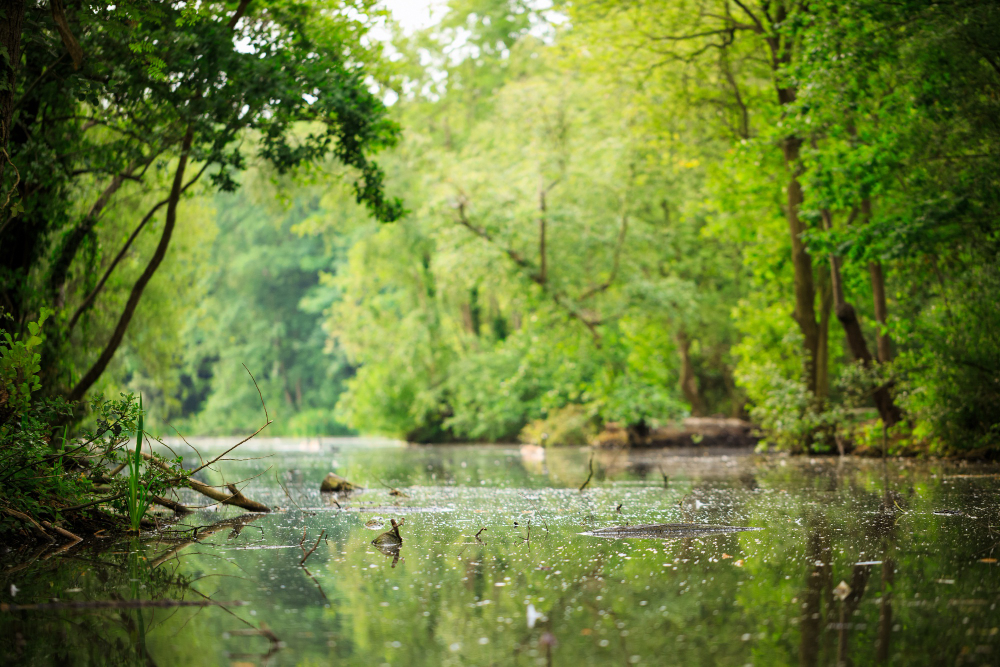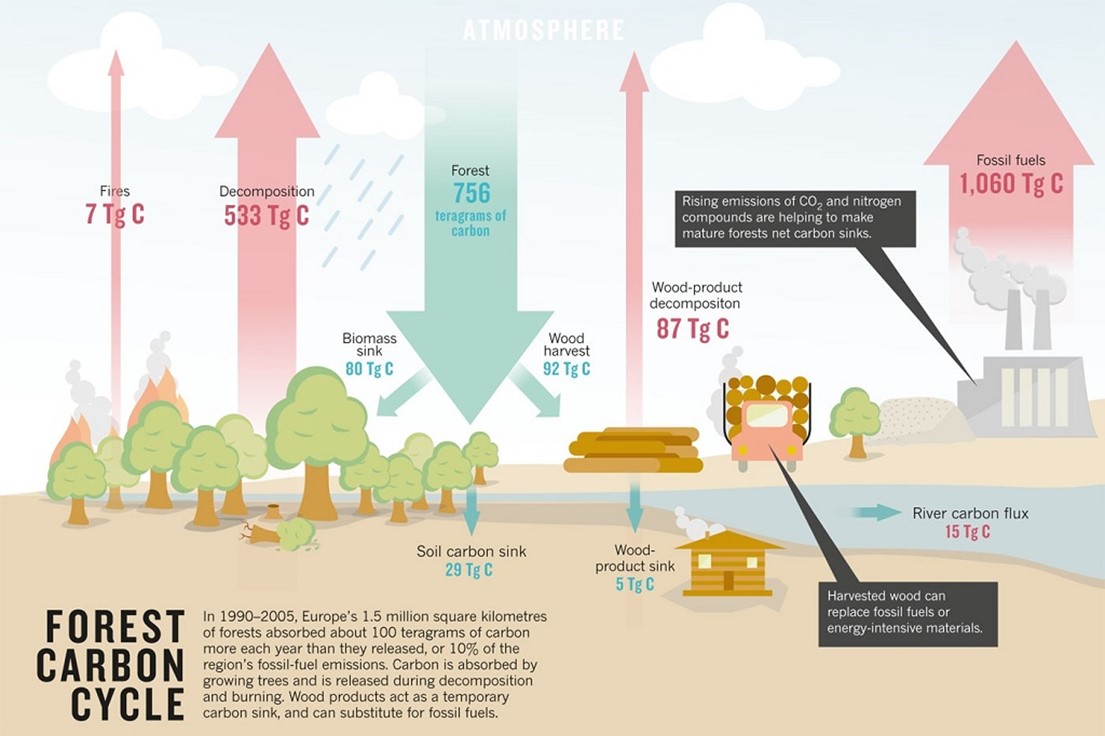The role of forests – the impact of land use change

Deforestation and forest degradation have been key topics of discussion in recent years. Both phenomena are caused by human actions and have severe negative impacts on us and our way of living.
Particularly in light of the current issues related to the climate emergency we face, deforestation and forest degradation increase greenhouse gas emissions through associated forest fires and reduce the ability of forests to act as carbon sinks. Data indicates that deforestation alone accounts for 11 % of greenhouse gas emissions[1]. Additionally, deforestation and forest degradation substantially reduce biodiversity and negatively affect water cycles, among several other impacts.
In this article, we will take a deeper look at three aspects: the forest as a carbon sink, as a source of biodiversity and as part of the water cycle. The aim is to help us understand why forest preservation is a key necessity.
Carbon sink
Earth’s trees and plants pull vast amounts of carbon dioxide out of the atmosphere. Areas that absorb more carbon than they emit are called carbon sinks. An example is the Amazon rainforest which stores billions of tons of carbon every year.
During photosynthesis, trees and plants absorb, carbon from the atmosphere in the form of CO2(carbon dioxide), using it as “food”. The carbon from the CO2 becomes part of the plant and is stored as wood. When the plant dies, the carbon it has been storing is released back into the atmosphere. Plants can also emit CO2 (a greenhouse gas) during processes like respiration or combustion in the case of fires. Figure 1 below illustrates the carbon cycle.
The terrestrial biosphere is believed to have provided a net sink for ∼20% of carbon dioxide emitted by fossil fuel combustion and industry over the last three decades, with the majority estimated to have occurred in forests[2]. Forests thus potentially act retarding anthropogenic climate change by slowing the rate of carbon dioxide (CO2) accumulation in the atmosphere.
A NASA[3] publication points out that the total amount of carbon emitted and absorbed in the tropics is several times larger than in temperate regions and boreal areas combined, but that the ability of tropical forests to absorb massive amounts of carbon has declined in recent years. The decline is due to large-scale deforestation, habitat degradation, and climate change effects, like more frequent droughts and fires. A study[4] showed that 90% of the carbon that forests around the world absorb from the atmosphere is offset by the amount of carbon released by such disturbances as deforestation and droughts.

Biodiversity
Biodiversity is a term used to describe the enormous variety of life on Earth. It can be used more specifically to refer to all of the species in one region or ecosystem. Biodiversity refers to all living things, including plants, bacteria, animals, and humans[1].
The biodiversity that exists in a forest makes possible the existence of food, medicines, and a set of other products and ingredients that are relevant to life in contemporary societies. Most of the time we use products without knowing their origin (check box 1). But while a multitude of products/ ingredients that are present in our daily lives can be traced back to a forest, we still know very little about the services forest and its inhabitants can provide us or about the size of the potential discoveries of new industrial products such as medicines.
Based on a publication from Nature[2], suggests that more than 80% of species on Earth are still undiscovered by us. The analysis points out that some groups are much better known than others. For example, about 72% of the predicted 298,000 plant species on land have already been documented, in comparison with only 12% of predicted land animal species and 7% of predicted land fungi species. This gives us an idea of the potential scale of the losses of services we are facing due to deforestation and forest degradation.
Flying rivers
Forests are part of the water cycle, acting as pumps that “recycle” water. Through the process of evapotranspiration, forests replenish the supply of water vapour in the atmosphere. Based on the information provided by FAO[3], as much as 70 percent of the atmospheric moisture generated over land areas comes from plants, which has an important impact on water availability across landscapes. Atmospheric moisture generated by forests affects water availability locally and in other regions, as moisture is transported by wind. This phenomenon of air currents carrying water vapour generated by forests into different regions is known as “flying rivers”.
The Amazon region is an example of a flying river. The water vapour generated by the rainforest is transported as far south as North Argentina and the Amazon’s flying rivers are responsible for much of the rain that falls in the centre-west, southeast, and south of Brazil. According to the FAO, researchers have calculated that the amount of water released into the atmosphere by the rainforest each day is estimated to be around 20 billion tonnes – an amount comparable to the flow of the Amazon River. Flying rivers are also recorded in the Congo Basin.
With forests contributing to water availability downstream and downwind through these “flying rivers”, the role of forests in supplying water gives a new dimension to deforestation and forest degradation concerns.

ProTerra´s approach to deforestation and forest degradation
ProTerra Foundation envisages a world where all businesses contribute to the protection of biodiversity and conserves natural resources requiring a set of practices that aim at these objectives. An example is the existence, under the ProTerra Standard, of Principle 4 – Biodiversity conservation, effective environmental management, and environmental services. Key aspects of this Principle include the limitation of land conversion and the need for forest conservation (native vegetation and other specially preserved areas cannot be converted into agricultural land after 2008 to enable certification under ProTerra). Certified organisations are also required to maintain and enrich biodiversity by restoring areas of natural vegetation in sensitive parts of the ecosystem.
The ProTerra Foundation believes that to be sustainable, agriculture must act urgently to reduce deforestation and forest degradation, thereby helping reduce the negative impact of climate change and ensuring we retain forest services.